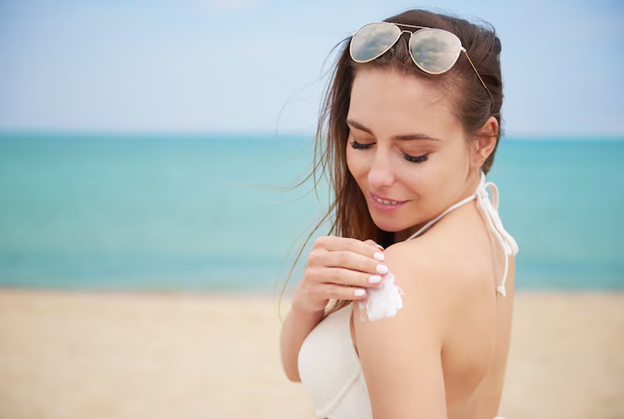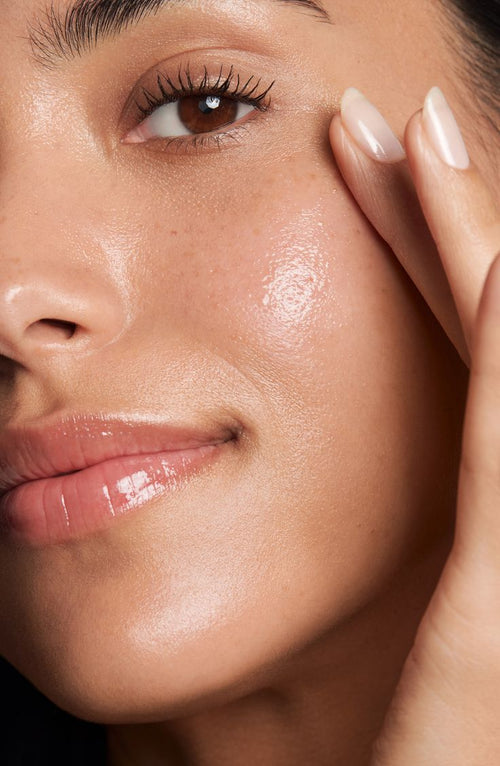
Sensitive Skin SOS: Gentle Products That Won’t Irritate
Share
Sensitive skin is more common than you think. Many people struggle with redness, dryness, itching, or stinging. These reactions can happen after trying a new product or even after using something that once felt fine.
The truth is, sensitive skin isn’t just a type. It’s often a condition caused by a damaged skin barrier, allergies, or exposure to harsh ingredients. If you’ve ever felt your skin burn after applying a new cream or turn red after a simple face wash, you know the frustration.
This article will help you understand sensitive skin better. You’ll also learn which ingredients to avoid, which to look for, and how to build a gentle routine with products that won’t cause harm.
What Causes Sensitive Skin?
Sensitive skin reacts easily to things that wouldn’t bother most people. It’s not always visible. Some people don’t show redness but still feel itching or stinging. Others break out in dry patches or develop bumps.
Here are a few common reasons why skin becomes sensitive:
● Damaged skin barrier – The outer layer of your skin keeps moisture in and bad stuff out. When this barrier is weak, irritants get in more easily.
● Allergies or sensitivities – Your skin might be reacting to certain ingredients, fabrics, or even water.
● Overuse of actives – Ingredients like retinol, exfoliating acids, and vitamin C can cause irritation if overused.
● Harsh cleansers – Soaps with sulfates or strong surfactants strip natural oils and leave the skin dry and inflamed.
● Environmental stress – Pollution, sun, wind, and extreme temperatures can all increase skin sensitivity.
Sometimes, sensitive skin is linked to conditions like eczema, rosacea, or contact dermatitis. But many people without diagnosed conditions still deal with daily sensitivity.
Signs Your Skin Is Sensitive
Not sure if you have sensitive skin? These signs are very common:
● Burning or stinging when applying products
● Red patches, especially after cleansing
● Dry or flaky areas that won’t go away
● Breakouts that look like rashes
● Tightness after washing your face
● Reactions to fragrance or preservatives
If this sounds familiar, don’t worry. You’re not alone. And with the right care, your skin can feel calm and healthy again.
What to Avoid If You Have Sensitive Skin
Before we talk about what to use, it’s important to know what to avoid. Many people with sensitive skin react to ingredients that are common in skincare.
Avoid These Ingredients:
● Fragrance – This is the number one cause of irritation. Even “natural” essential oils can be too harsh.
● Alcohol (denatured or SD alcohol) – Used in many toners or acne products, it dries and weakens the skin.
● Harsh exfoliants – Large scrub particles (like walnut shells) or strong acids (like glycolic acid) can tear and irritate.
● Sodium lauryl sulfate (SLS) – A common foaming agent that strips your skin of natural oils.
● Preservatives like formaldehyde releasers – These include DMDM hydantoin or quaternium-15.
Also, be cautious with new “clean beauty” trends. Some natural ingredients like citrus oils, cinnamon, or peppermint sound nice but can be irritating, especially if used undiluted or too often.
Ingredients That Help Soothe Sensitive Skin
Now let’s focus on the good stuff—ingredients that actually calm and repair your skin. These are the ones you want to look for on labels.
Best Ingredients for Sensitive Skin:
● Ceramides – These are fats that occur naturally in your skin. They help strengthen your barrier and lock in moisture.
● Centella Asiatica (Cica) – A plant extract known for calming redness and boosting healing.
● Colloidal Oatmeal – Soothes itching and reduces inflammation. Often used in eczema-friendly products.
● Aloe Vera – A classic calming ingredient, great for cooling irritation and redness.
● Panthenol (Vitamin B5) – Hydrates and helps the skin recover from damage.
● Squalane – A lightweight oil that moisturizes without clogging pores or causing reactions.
● Madecassoside – A compound from Centella that repairs skin and reduces visible sensitivity.
When choosing products, aim for short ingredient lists. Less is more when it comes to calming sensitive skin.
Best Types of Products for Sensitive Skin
Your routine doesn’t need to be complex. In fact, keeping it simple is one of the best things you can do. Here’s a guide to building a gentle skincare routine.
Cleanser
Choose a mild, non-foaming cleanser. It should be free of sulfates and fragrance. A creamy or milky texture is ideal. Cleansing just once a day, usually at night, is often enough for sensitive skin.
Moisturizer
A good moisturizer helps your skin heal. Look for rich but non-greasy textures with ingredients like ceramides, shea butter, or hyaluronic acid. Avoid anything labeled “mattifying” or “oil-control”—these are often too drying.
Sunscreen
Sun protection is essential, but many sunscreens can irritate sensitive skin. Look for mineral-based sunscreens with zinc oxide or titanium dioxide. These sit on top of the skin rather than being absorbed, which makes them less likely to cause a reaction.
Treatments and Serums
You don’t need many extras. If you do want to use serums, start with calming ones that contain niacinamide or panthenol. Avoid harsh actives unless guided by a dermatologist.
Skincare Tips for Sensitive Skin
Gentle products are only one part of the solution. How you treat your skin every day also matters.
● Wash with lukewarm water, not hot
● Pat your skin dry—don’t rub
● Don’t try too many new products at once
● Always patch test new products on your jaw or inner arm
● Limit exfoliation to once per week, if at all
● If something burns or stings, rinse it off immediately
Sometimes your skin just needs time. Give products at least two weeks before deciding if they work. Switching too often can make things worse.
When to See a Dermatologist
If your skin constantly feels irritated, nothing seems to help, or you’re getting painful rashes, it’s time to see a professional. Conditions like rosacea or contact dermatitis can look like regular sensitivity but need medical care.
A dermatologist can:
● Recommend prescription creams that calm inflammation
● Identify triggers through patch testing
● Suggest in-office treatments for barrier repair
You don’t have to figure it out alone. If over-the-counter products aren’t enough, help is available.
Conclusion
Living with sensitive skin can feel like walking through a minefield. One wrong move, and your face is red, itchy, or burning. But with the right knowledge and gentle products, your skin can heal and thrive.
Focus on calming, barrier-repairing ingredients. Avoid fragrance and alcohol. Keep your routine simple and consistent. Most importantly, listen to your skin. It will tell you what it needs—quietly, but clearly.
Gentle care isn't about doing less. It’s about doing what matters most.

